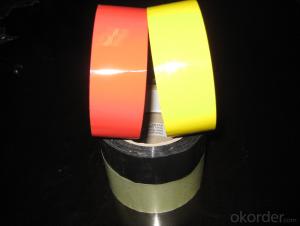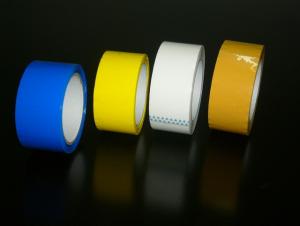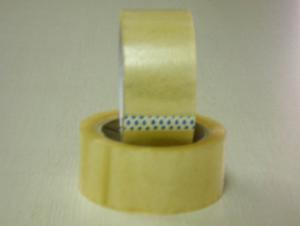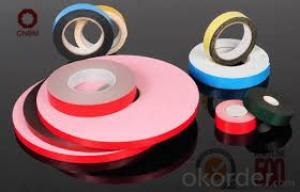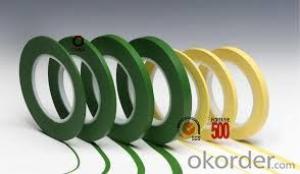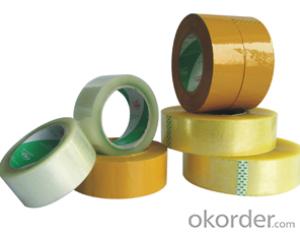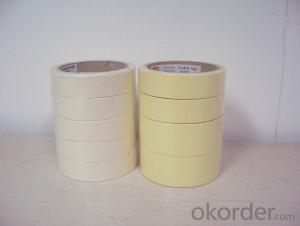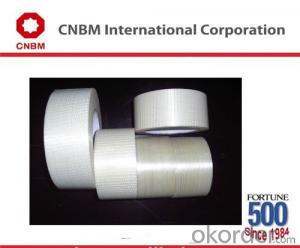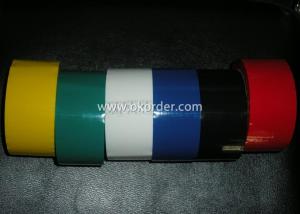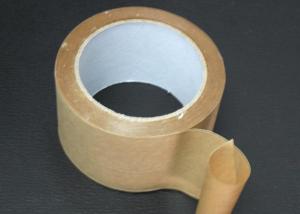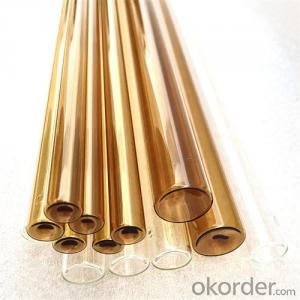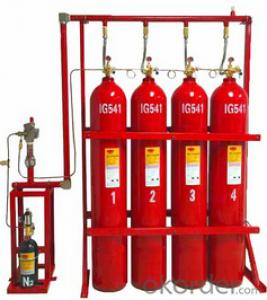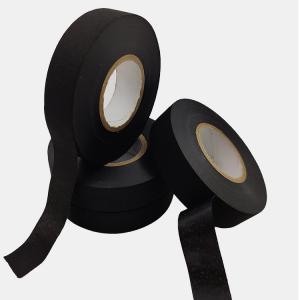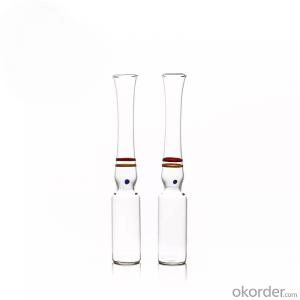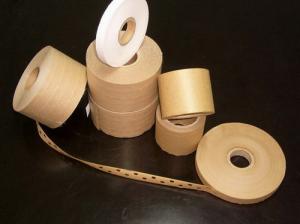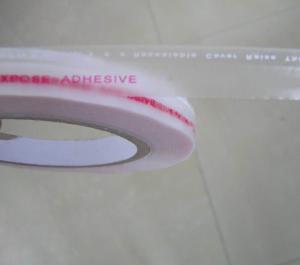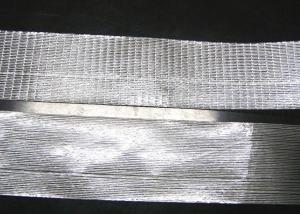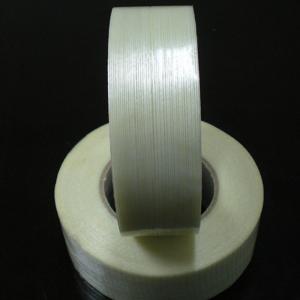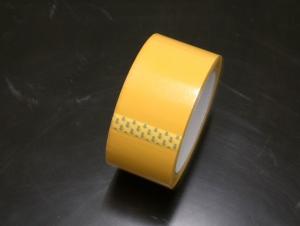High Performance Packing Tape 60micron
- Loading Port:
- China Main Port
- Payment Terms:
- TT OR LC
- Min Order Qty:
- -
- Supply Capability:
- -
OKorder Service Pledge
OKorder Financial Service
You Might Also Like
CONSTRUCTION:
Carrier: BOPP film
Adhesive: Water based acrylic adhesive.
TYPICAL PHYSICAL PROPERTIES:
Total Thickness (adhesives + carrier): 60± 2 um
Initial Tack (11mm steel ball): ³ 18#
180O Peel Adhesion (to steel): ³ 0.5 kgf /25mm
Holding Power: ³ 24 hrs
Tensile Strength: ³ 30 N/cm
Elongation: ≤180%
PACKING:
Core I.D.: 3” (76mm±1)
Jumbo Roll:1280mm x 4000m
Cut Roll: As per customer’s requirements
Application:
Carton sealing & packing, Light duty packaging, bundling, holding, and other office & household use.
REMARKS:
1. The data above are typical results and subject to change without notice.
2. Tolerance: Weight and Thickness: ±10%; Width: ±3mm;
Length: Cut Roll & Log Roll ±0.3m, Jumbo Roll ±0.5%.
3. The products should be stored at room temperature and be kept away wet and/or heat source.
4. It is essential, as with all pressure-sensitive tapes, that the surface to which the tape is applied must be clean, dry, and free of grease and oil.
5. The users should take test and do trial-application on the above products before coming into application so as to witness and ensure suitability for their special purpose and technique.
- Q:Can packaging tape be used for sealing plastic clamshell packaging?
- Yes, packaging tape can be used for sealing plastic clamshell packaging. It provides a strong and secure seal to keep the contents of the packaging safe and protected.
- Q:Does packaging tape come in different allergen-free options?
- Yes, packaging tape is available in various allergen-free options. Many manufacturers offer packaging tapes that are specifically designed to be hypoallergenic and suitable for individuals with allergies or sensitivities. These tapes are typically free from common allergens such as latex, gluten, and certain chemical irritants. It is important to check the product description or contact the manufacturer to ensure that the packaging tape meets your specific allergen-free requirements.
- Q:Is packaging tape resistant to moisture or humidity?
- Yes, packaging tape is generally resistant to moisture or humidity. Most packaging tapes are made with materials such as polypropylene or acrylic, which are known for their ability to withstand moisture and humidity. These tapes are designed to create a strong seal on boxes and packages, preventing the entry of water or moisture. Additionally, packaging tapes often have an adhesive that is specially formulated to maintain its stickiness even in humid conditions. However, it's important to note that the level of resistance may vary depending on the specific type and quality of packaging tape used.
- Q:What are the considerations for using packaging tape on wooden surfaces?
- There are several factors to consider when using packaging tape on wooden surfaces. Firstly, it is crucial to select the appropriate type of tape for the wood. Choose a tape specifically designed for wood or one with a gentle adhesive to prevent damage or residue. Avoid strong adhesive or duct tapes that may leave sticky residue or peel off the wood's finish. Secondly, take into account the condition of the wood. If it is old, fragile, or has cracks, extra precautions are necessary. Applying tape directly to damaged or delicate wood can cause further harm, such as stripping the varnish or causing splintering. In such cases, alternative methods should be used to secure or protect the wood. Consider the duration for which the tape will be applied. If it is temporary, most types of packaging tape are generally safe to use. However, if the tape will be left on the wood for an extended period, choose a tape that is less likely to damage or leave residue when removed. Additionally, be mindful of the climate or environment in which the wood will be situated. Extreme temperatures or humidity can affect the adhesive properties of the tape, potentially causing it to lose stickiness or damage the wood. In such cases, alternative methods may be required to secure or protect the wood. Lastly, always test a small, inconspicuous area of the wood with the tape before applying it extensively. This allows for assessment of any potential damage or residue and helps make an informed decision about using the tape on the entire wood surface. By considering these factors, one can ensure the safe use of packaging tape on wooden surfaces without causing unnecessary damage or issues.
- Q:How do I prevent packaging tape from getting tangled?
- Here are several suggestions to prevent packaging tape from becoming tangled: 1. Invest in a tape dispenser designed specifically for packaging tape. This dispenser incorporates a built-in cutting blade and roller mechanism that will help maintain control over the tape and prevent tangling. 2. Before applying the tape, ensure that the surface is clean and free of dust, debris, or any other potential obstructions that could cause the tape to stick and tangle. 3. Minimize handling of the tape as much as possible, as each time it is touched, there is a greater likelihood of it twisting or tangling. Handle the tape only when necessary. 4. Use a sharp cutter or a dispenser with a cutting blade to make clean and straight cuts. Uneven or jagged cuts can cause the tape to twist or tangle as it is unrolled or applied. 5. Store the tape properly when it is not in use. Keep it in a cool and dry place, away from direct sunlight or extreme temperatures. Additionally, keeping the tape in its original packaging or a designated container can help prevent tangling. 6. When unrolling the tape, hold the roll firmly and apply a slight tension to keep it straight. Avoid jerky movements or pulling the tape too forcefully, as this can cause it to twist or tangle. By following these suggestions, you can reduce the likelihood of packaging tape becoming tangled, resulting in a smoother and more efficient packaging process.
- Q:Can packaging tape be used for sealing plastic containers?
- Yes, packaging tape can be used for sealing plastic containers. It is a commonly used method to secure and seal plastic containers, ensuring their contents remain intact and protected.
- Q:Can packaging tape be used for sealing cardboard boxes?
- Yes, packaging tape is commonly used for sealing cardboard boxes as it provides a strong and secure bond.
- Q:Can packaging tape be used for sealing gardening or outdoor equipment?
- Yes, packaging tape can be used for sealing gardening or outdoor equipment. It provides a strong adhesive bond and can effectively seal boxes or other packaging materials used for storing or transporting gardening or outdoor equipment. However, it is important to consider the durability and weather resistance of the tape to ensure it withstands outdoor conditions.
- Q:Can packaging tape be used for other purposes besides packaging?
- Packaging tape is not limited to packaging; it can be utilized for various purposes. With its strong adhesive properties and durability, it serves a multitude of functions. For instance, it proves useful in household repairs like mending broken book spines or securing loose cables. Moreover, it finds its place in crafting projects, allowing the creation of temporary or permanent decorations, durable envelopes, and even makeshift labels or item organization. Additionally, it comes in handy for quick fixes, like sealing small leaks or cracks in pipes or containers until a more permanent solution is discovered. The versatility of packaging tape ensures its usefulness in diverse situations, making it an essential tool for any home or office, surpassing its initial purpose of packaging.
- Q:What is the average width of packaging tape?
- Packaging tape usually has an average width ranging from 1.88 inches to 2 inches. This standardized width ensures effective sealing of boxes and packages, ensuring a secure and dependable closure. Nevertheless, it is worth noting that the market offers different tape widths to cater to specific packaging requirements or personal preferences, with some tapes being narrower or wider.
1. Manufacturer Overview |
|
|---|---|
| Location | |
| Year Established | |
| Annual Output Value | |
| Main Markets | |
| Company Certifications | |
2. Manufacturer Certificates |
|
|---|---|
| a) Certification Name | |
| Range | |
| Reference | |
| Validity Period | |
3. Manufacturer Capability |
|
|---|---|
| a)Trade Capacity | |
| Nearest Port | |
| Export Percentage | |
| No.of Employees in Trade Department | |
| Language Spoken: | |
| b)Factory Information | |
| Factory Size: | |
| No. of Production Lines | |
| Contract Manufacturing | |
| Product Price Range | |
Send your message to us
High Performance Packing Tape 60micron
- Loading Port:
- China Main Port
- Payment Terms:
- TT OR LC
- Min Order Qty:
- -
- Supply Capability:
- -
OKorder Service Pledge
OKorder Financial Service
Similar products
New products
Hot products

